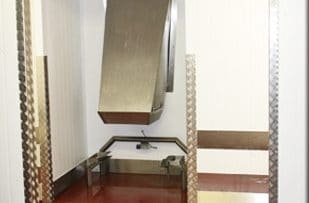Cold rooms are essential for storing perishable goods and maintaining product quality in various industries. However, like any mechanical system, cold rooms require regular maintenance to ensure optimal performance and prevent breakdowns. In this article, we’ll discuss some common cold room maintenance issues and provide tips on how to address them effectively.
Temperature Fluctuations:
Issue:
One of the most common maintenance issues in cold rooms is temperature fluctuations. Fluctuations in temperature can lead to spoilage of perishable goods and compromise product safety and quality.
Solution:
To address temperature fluctuations, start by checking the thermostat settings and ensuring they are properly calibrated. Inspect the door seals for any damage or wear and replace them if necessary to maintain a tight seal. Clean the evaporator coils regularly to prevent ice buildup, which can affect airflow and temperature control. Additionally, consider installing temperature monitoring systems to alert you to any deviations from the desired temperature range.
Frost Build-up:
Issue:
Frost buildup on evaporator coils is another common cold room maintenance issue. Frost accumulation reduces the efficiency of the cooling system and can lead to increased energy consumption and decreased cooling capacity.
Solution:
To address frost buildup, regularly defrost the evaporator coils according to the manufacturer’s recommendations. Clean the coils with a soft brush or cloth to remove any debris or dirt that may be contributing to frost accumulation. Check the door seals for leaks or gaps that may be allowing warm air to enter the cold room and contribute to frost buildup. Consider installing automatic defrost systems or heaters to prevent frost accumulation in the future.
Condensation:
Issue:
Condensation inside the cold room can lead to moisture buildup, mold growth, and corrosion of equipment and surfaces. Condensation is often caused by inadequate insulation, poor ventilation, or excessive humidity levels.
Solution:
To address condensation issues, ensure that the cold room is properly insulated to prevent temperature differences between the interior and exterior surfaces. Improve ventilation and airflow within the cold room to reduce humidity levels and promote evaporation of moisture. Consider installing dehumidifiers or moisture-absorbing materials to control humidity levels and prevent condensation buildup on surfaces.
Compressor Problems:
Issue:
Compressor issues, such as overheating, excessive noise, or failure to start, can affect the overall performance of the cold room and lead to system downtime.
Solution:
To address compressor problems, start by checking the power supply and ensuring that the compressor is receiving adequate voltage and current. Clean the compressor and condenser coils regularly to remove dirt, debris, and dust that may be affecting airflow and heat dissipation. Inspect the compressor motor for signs of wear or damage and lubricate moving parts as needed. If the compressor continues to experience issues, contact a qualified technician for professional diagnosis and repair.
Refrigerant Leaks:
Issue:
Refrigerant leaks are a serious cold room maintenance issue that can lead to reduced cooling capacity, increased energy consumption, and environmental concerns.
Solution:
If you suspect a refrigerant leak, turn off the cold room immediately and contact a qualified technician for inspection and repair. Refrigerant leaks should be addressed promptly to prevent further damage to the cooling system and minimize the risk of environmental contamination. Technicians can use leak detection tools and techniques to identify and repair leaks effectively, ensuring the safe and efficient operation of the cold room.
Electrical Problems:
Issue:
Electrical problems, such as faulty wiring, tripped breakers, or malfunctioning controls, can affect the operation of the cold room and pose safety hazards.
Solution:
If you encounter electrical problems in your cold room, start by checking the power supply and ensuring that all electrical connections are secure and properly grounded. Inspect the wiring for any signs of damage or wear and replace any damaged components as needed. Reset tripped breakers and calibrate controls to ensure proper operation. If electrical problems persist, contact a qualified electrician or technician for professional diagnosis and repair.
Insufficient Insulation:
Issue:
Insufficient insulation can lead to heat gain, temperature fluctuations, and increased energy consumption in cold rooms.
Solution:
To address insufficient insulation, inspect the walls, ceiling, and floor of the cold room for any gaps, cracks, or areas of inadequate insulation. Seal any gaps or cracks with appropriate insulation materials to prevent heat transfer and maintain temperature stability. Consider upgrading insulation materials or adding additional layers of insulation to improve thermal performance and energy efficiency.
Final Thoughts:
Regular maintenance is essential for ensuring the reliable and efficient operation of cold rooms. By addressing common maintenance issues such as temperature fluctuations, frost buildup, condensation, compressor problems, refrigerant leaks, electrical problems, and insufficient insulation, businesses can minimize downtime, reduce energy consumption, and prolong the lifespan of their cold room systems. Remember to schedule routine inspections and preventive maintenance tasks to identify and address potential issues before they escalate into costly repairs or system failures. If you encounter complex or persistent maintenance issues, don’t hesitate to seek professional assistance from qualified technicians or service providers specializing in cold room maintenance and repair.



